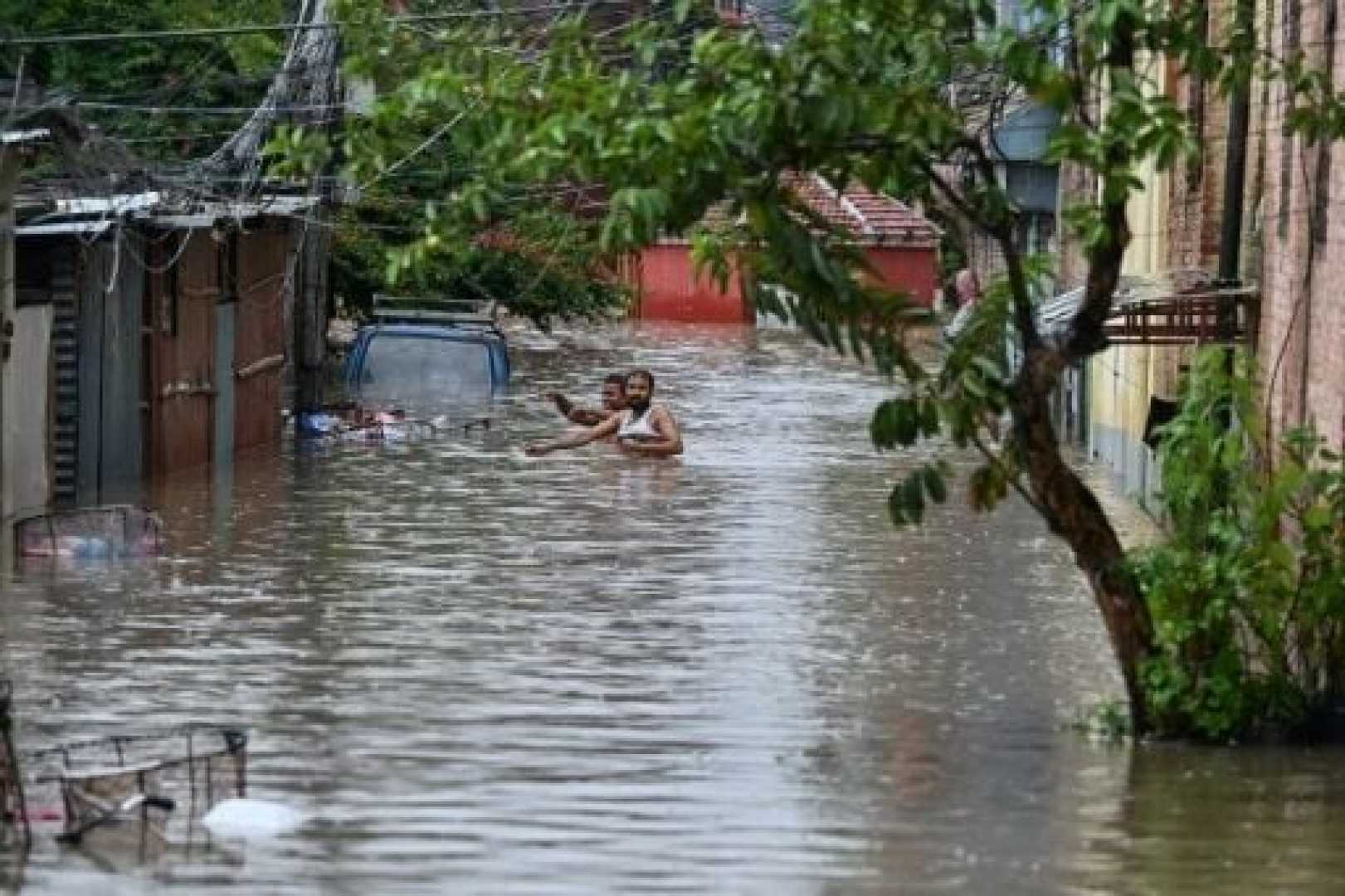News
Deadly Flooding and Landslides Strike Nepal, Leaving Over 148 Dead

Rescuers in Nepal have been tirelessly working to recover bodies and assist those affected by the devastating landslides and flooding near the capital, Kathmandu. As of Sunday, the death toll has risen to at least 148 people, with dozens more reported missing, according to Nepalese officials.
A statement from the Nepal police revealed that 86 individuals have suffered injuries due to the flooding and landslides, while approximately 62 individuals are unaccounted for. Rescuers have managed to retrieve 14 bodies overnight from two buses that were en route to Kathmandu when a landslide struck. Authorities confirmed that an additional 23 bodies were found in vehicles buried near the same location, roughly 16 kilometers from Kathmandu.
The disaster unfolded as monsoon rains lashed the region for three consecutive days, but on Sunday, weather conditions improved, allowing for intensified rescue and clean-up efforts. Despite the temporary reprieve from the inclement weather, Kathmandu remained cut off, with three major highways obstructed by debris from the landslides.
In the southern part of Kathmandu, affected residents began cleaning their inundated houses as water levels fell. The capital city was among the hardest-hit areas, with at least 34 fatalities reported. Authorities utilized heavy machinery to clear the roads, while police and soldiers assisted in the rescue missions.
State media has reported that schools and colleges across the country have been ordered closed for the next three days as the government grapples with the natural disaster’s fallout. Over 3,600 people have been rescued, and search operations continue as reports emerge from remote villages nationwide.
Meanwhile, around Prithvi Highway near Kathmandu, police officials have confirmed the recovery of 35 bodies buried under landslides. Natural barriers continue to block most motorways connecting Kathmandu to the broader nation, delaying relief efforts.
The catastrophic events have resulted in tragedy across several areas. In Bhaktapur, east of Kathmandu, a house collapse claimed the lives of five individuals, including a pregnant woman and a young girl. In a separate incident reported by the state media, two bodies were retrieved from a bus covered by a landslide in Dhading, west of the capital. Additionally, a training center operated by the All Nepal Football Association in Makwanpur witnessed the deaths of six football players due to landslides.
Survivors have shared harrowing tales of their experiences. “We had to jump from one roof to another to escape,” recounted Bishnu Maya Shretha. Another resident, Hari Om Malla, observed his truck submerged by the floodwaters in Kathmandu, leaving him bereft of personal belongings.
Government spokesman Prithvi Subba Gurung stated to the state media, Nepal Television Corporation, that the flooding disrupted major infrastructure, including water pipes, telephone, and power lines. In response, the Nepalese government urged residents to limit travel and enforced a ban on night travel in the Kathmandu valley. Moreover, domestic air travel experienced delays and cancellations on Friday and Saturday.
The monsoon season, typically lasting from June to mid-September, annually brings such challenges to Nepal. However, experts emphasize that climate change is intensifying rainfall patterns. A warmer atmosphere retains more moisture, while increased ocean temperatures can escalate storm systems.












